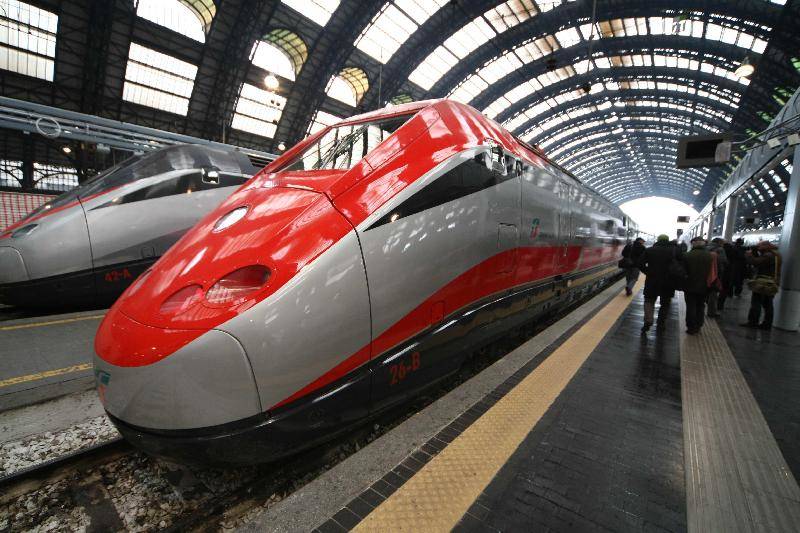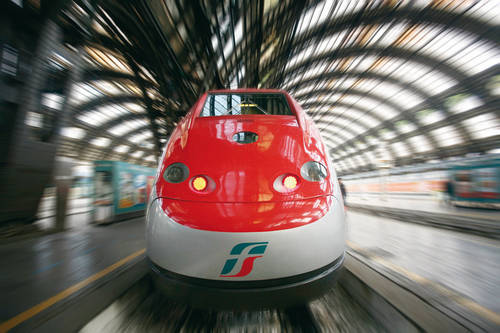Derailing Turin’s High-Speed Train
ROME – To TAV or not to TAV – that is the question. The quarrel over the much-delayed construction of the TAV (short for Treno Alta Velocità, or high-speed train), cutting through and beneath the Val di Susa in the Alps from Turin to Lyons in France, has mushroomed into almost daily demonstrations.
No TAV is the name of the protest groups operating in Milan and Rome, as well as in the Val di Susa, and they have blocked highways, railway lines and city centers. Demonstrators broke into a newspaper office in Rome. A local pro-TAV mayor has received serious threats, and his young son has had to be escorted to school by guards.
Spokesmen for the so-called “technical” babysitting government of Mario Monti explain that the TAV project has been thoroughly analyzed, and that their conclusion is that it is a valid modernizing factor. At a cost for the Italian sector estimated at E2.7 billion (Italy will pay only a part, however), it is expected to enter into service around 2024. It will, it is hoped, quadruple the amount of material transported by rail and hence reduce truck traffic. In support of the government’s decision, Italian President Giorgio Napolitano, on a visit to Turin this week, snubbed the No TAV movement by refusing to meet with a small coterie of local mayors who oppose its construction. The No TAVs crowed that during his visit no one bothered to show up save a small group of schoolchildren.
In the current political party vacuum, Monti must take care not to alienate masses of young people who, mobilized around the No TAV movement, might organize savage protests on the lines of those in Greece with the risk of infiltration by violent subversives. This is what the government most fears. The No TAVs are extremely media-savvy and have successfully kited a local situation into a national emergency, with stunts that grab headlines and whiz around Italy on Internet blogs. As a result, says pollster Renato Mannheimer in the daily Corriere della Sera, 44% of those queried sympathize with opponents of the project.
The question is knotty, and both emotional and rational arguments can be made to justify going ahead with construction or canceling a plan first promoted by Umberto Agnelli in 1990. Antonio Di Pietro, head of the Italia dei Valori party is one opponent—but when he was Minister of Public Works in the government of Romano Prodi, he voted in its favor. Here are a few pro’s and con’s.
CON: It costs too much and wastes money.
PRO: Costs whom too much? Forty percent is paid by the European Union, 30% by France and the remaining 30% by Italy.
CON: Yes, and France too has had mass protests against it. Anyway, we already have a train that runs only 25% full.
PRO: It is an old rattletrap, and this will cut the travel time by hours while connecting us better with Europe via the French TGV to Budapest.
CON: Oh? Well, the new Turin-Milan train line can carry 330 trains a day but in fact only eighteen are in use daily. Besides, in digging such a tunnel uranium underneath and asbestos underground will leak out and poison the folks living in the valley.
PRO: Studies show that the uranium is not processed and can do no harm. The presence of asbestos would be a risk solely to the workers while the tunnel is being excavated, and they will be protected.
CON: Ground water will be harmed. Irrigation of farmland will be ruined. Our farmers will suffer. And we don’t want our Alpine valleys ruined for tourism.
PRO: The TAV will run for 54 km (30 miles) under Mount Moncenisio and is largely invisible. Do you prefer the big rigs to keep driving through the valleys?
CON: Truck traffic through our valleys is already declining because most traffic goes from Verona northward to Switzerland and Austria. Also, train transport for goods will not be competitive because half of inter-regional transit today is only for short distances, under 300 miles. The costs of loading and unloading will make rail transport too expensive.
PRO: Your association of businessmen, Ascom, thinks it will help business. And by the way, Ascom is worried that tourism to the valleys is being harmed by all these demonstrations.
CON: What will be harmed is all transport. Loading will be at Turin, right? How can loading take place where roads are already clogged?
PRO: It will make you all wealthier by connecting you with western France.
CON: Why France? The new business is all coming from East Europe. Get yourselves a compass.
PRO: Are you trying to kick us back to the Fifties? Do you want Italy marginalized in Europe?
CON: A crime expert like Roberto Saviano shows that many big construction companies working in and around Turin have Mafia infiltrations. Saviano said: “We must have the courage to understand the Italy at this time is unable to guarantee that this project will not become the biggest goldmine ever for the Mafia.”
PRO: That is a job for the police and the courts. Companies with Mafia links will not be chosen to do the work.
CON: People from all over Italy have come to the valley to oppose construction.
PRO: Yes, including from Calabria, where a rattle-trap train makes contact with Rome, not to mention the rest of Italy and Europe, very uncomfortable. Why aren’t they at home demonstrating in their own interests?
CON: At least let’s have a moratorium for a while and think this thing through!
PRO: There has been a moratorium for the past six years. Delegations of opponents have met with the government during that time, and their suggestions have already been incorporated in the revised plan.
CON: What is the point of all this? To build something just to build it?
PRO: The point is that you are opposing modernism, defending truck transport and ignoring the fact that it will provide work for some 2,000, in addition to making our products available, faster and cheaper, to North Europe.
CON: If you’re so keen on its construction, let it be decided in a referendum. This is a democracy, right? Let the mountain people choose for themselves.
PRO: And just who would be entitled to vote in the referendum—the French? People from all over Italy? Or just the people living in the valley?





































i-Italy
Facebook
Google+
This work may not be reproduced, in whole or in part, without prior written permission.
Questo lavoro non può essere riprodotto, in tutto o in parte, senza permesso scritto.